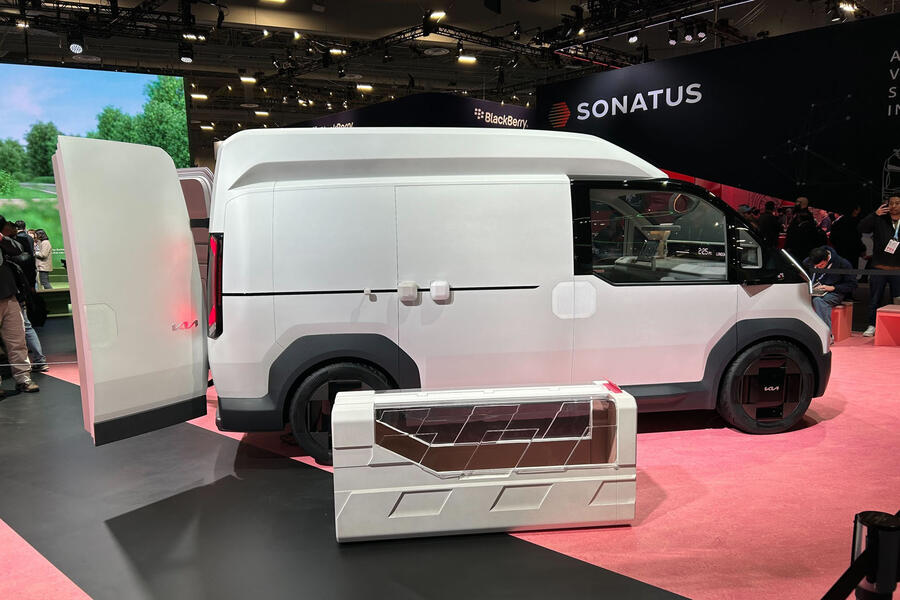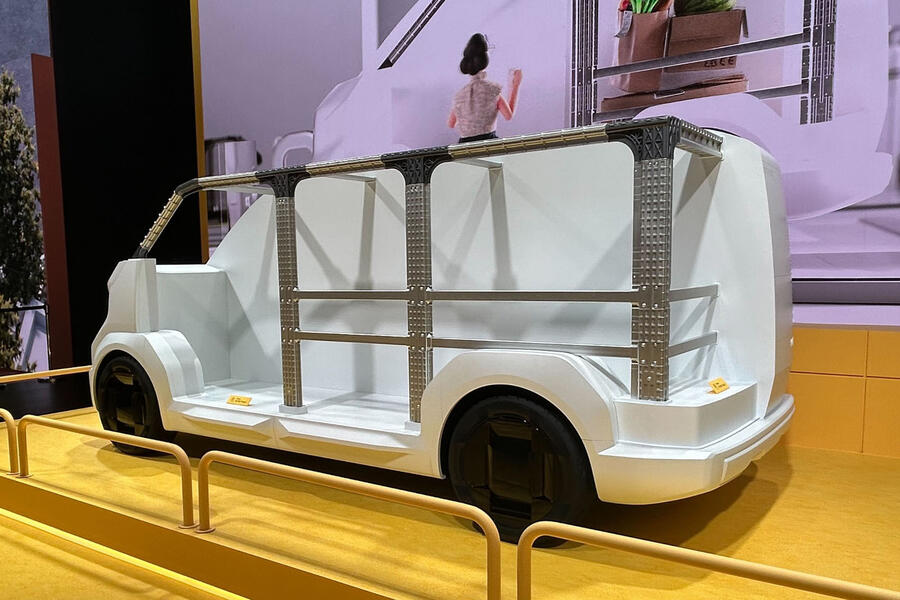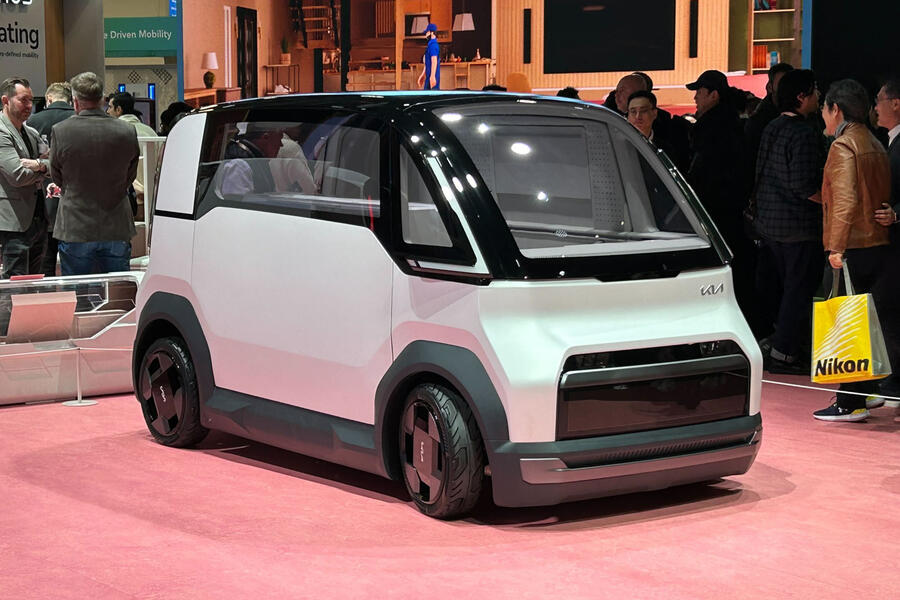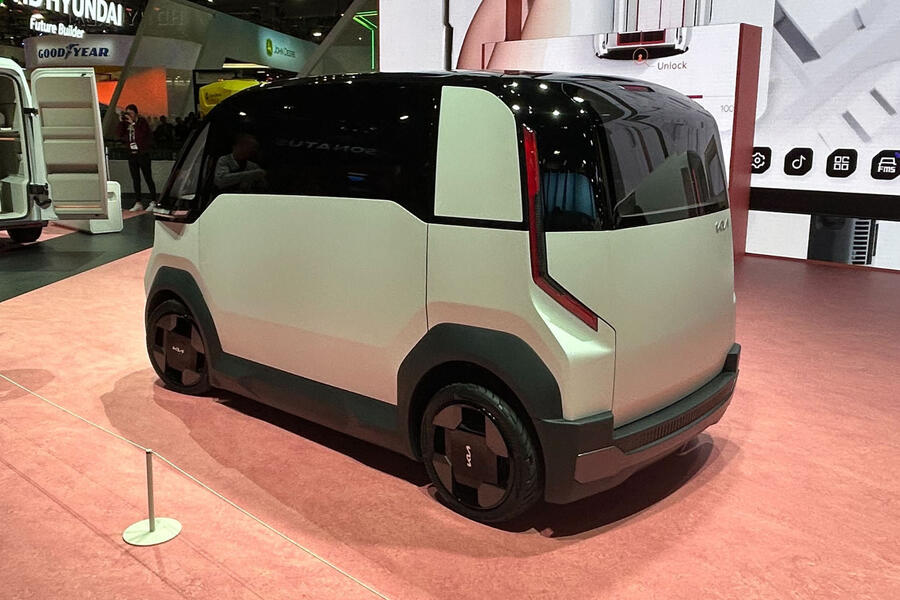The Kia PV5 is the cornerstone of a new range of electric commercial vehicles
The production version of the new PV5 will make its UK debut on April 29 at the CV Show
Kia will launch its electric van business in the UK on April 29 when the production version of the PV5 makes its national debut at the Commercial Vehicle Show.
The PV5 was first shown in concept form at the CES electronics show in Las Vegas last year, and prototypes were recently spotted in Europe ahead of its imminent unveiling.
It’s the first in a line-up of trucks planned by the Korean manufacturer, with the concept unveiled alongside the smaller PV1 and PV3, as well as the Mercedes Sprinter PV7.
Kia The PV5 will be offered with a seven-year, 100,000-mile warranty as standard, and connectivity to the Geotab fleet management platform will also be provided, he said.
Paul Philpott, president and CEO of Kia UK, told Autocar earlier this month that deliveries of the PV5 would begin “during the fourth quarter” – that is, between October and December – and that the launch of the trucks is “an important extension of our brand”.
He added: “[It’s] A very important market. Another 350,000 trucks go on sale every year, and there’s a piece of that pie that we didn’t have any of, which we can add to our automotive business.
Everything you want to know about the new Kia vans
Kia will enter the world of commercial vehicles in 2025 with an electric truck called the PV5.
the Kia The PV5, which was unveiled at CES in Las Vegas, is the first of a future line-up of what Kia calls PBVs, which stands for Platform Beyond Vehicle.
Kia showed off several concept versions of these PBVs at CES alongside the PV5, including the PV1, the smaller PV3 and the larger PV7, as well as different versions of the PV5 itself, as part of plans to increase its electric vehicle offering. Multi-purpose vehicles In the next decade.
The PV5 will be launched first in 2025, and is the first model to come from a new factory in Korea – with an initial capacity of 150,000 units per year – designed solely to produce PBVs using a dedicated, more flexible manufacturing process.
The PV5 is 4.7m long and has a target price of €35,000 (£30,600) for the entry-level model, although the battery size it will have and the indicated range have yet to be revealed. A longer wheelbase version is possible.

It will be built on a specially modified version of the E-GMP platform used in the likes of Kia EV6 And new Kia EV9 Electric cars.
Unlike those electric cars, the PV5 is originally front-wheel drive and has a 400-volt electrical architecture instead of 800-volt.
Two versions of the PV5 confirmed to be offered at launch are the seven-seat People Mover – a rival to the The new Ford Tourneo electric car – The truck has a high roof, which increases luggage space.
Kia is targeting small and medium businesses, including utility companies, with this truck initially. The pair of PV5s are scheduled to arrive in the UK in 2025.

The People Mover will appeal to taxi companies. Kia confirmed it was in talks with Uber over a supply deal and indicated that the ride-hailing giant was influencing elements of the PV5’s design and configuration.
There are also plans for a standalone Robotaxi version of the PB5, which was previewed at CES as the PV5-R.
A 2028 production date has been floated for this model, which will have Level 4 autonomous capabilities. As such, its introduction will be limited by legislation.
The final version of the PV5 is a pickup truck, although Kia admits this is intended to demonstrate the configurability of the platform and is not a model with production intent.
The company has plans to produce a combustion engine picks up In some global markets, but that is separate from this project.
The only constant element of the interior of all PV5 models is the ‘driver’s area’ cabin, with the rest able to be customized through the use of various interchangeable modules.
For example, the area traditionally used for the passenger seat can serve as a secure luggage hold area, while a variety of seat types can be placed in a number of layouts.
The launch of the PV5 is what Kia calls the first phase of a three-phase PBV project. The second phase will include the production launch of the PV7, which was previewed as a CES concept as well.
The PV7 will be offered in lengths from five to 5.7 meters and will go into production in 2027. This will also be front-wheel drive but will offer all-wheel drive as an option and will be equipped with an 800-volt electrical architecture for faster charging.
The second phase will also include the rollout of new software for the PBVs that will use artificial intelligence to ensure they are always up to date.
The third phase is more conceptual and not planned until at least 2032, but it envisions an entire network of PBVs of different sizes capable of interacting with each other across multiple uses and business needs.
The other two PBVs, the PV1 and PV3, are not yet planned for production.

Kia admits the PV3 is very similar to the PV5 at the moment but will invite companies to suggest use cases for it, which could lead to it being manufactured.
The PV1 is a small self-driving-only model.It is intended for carrying small loads in tight urban areas.
As indicated by the model names, Kia is also open to more self-propelled vehicle (PBV) models among the initial concepts in the future.
All models have a so-called “Dynamic Hybrid” modular body on top of their EV skateboard platform. This combines tubular steel and engineering polymers to reduce the amount of parts required by 55%, Kia claims, without any reduction in rigidity.

A lot of recycled materials are used in the construction of PBVs as well.
Kia is also developing a range of fleet management options, including over-the-air software updates, to help companies that manage a large number of self-propelled vehicles.
It is also developing a PBV ecosystem, based on an integrated rail system on the roof, floor and side of the machines, which will allow elements such as frames, cabinets and seats to be interchanged between different PBVs.
Beyond vehicles, Kia also plans to integrate robotics and self-driving technology into the autonomous vehicle ecosystem, so that the vehicles are ready for use in future “smart city” environments. This will be in the third stage.
Kia could be the smartest car ever – but is there a market for it?
George Barrow
It’s hard not to view the PV5 range with a healthy dose of skepticism but the requirements of the commercial vehicle industry are very different to those in the world of passenger cars. Advanced IT, AI features, and even sustainable materials in the cabin aren’t on the agenda for the average Joe whose truck is just another tool of his trade.
In its current guise, the PV5 will likely be about the same size as the load and cargo area Ford Transit Custom, the most successful truck of the past decade. I have my doubts that an electric-only light commercial vehicle (LCV) will be able to gain traction in such a competitive market. The volume appears erratic in a market where dual-pallet load spaces are important and many fleets struggle to effectively implement core IT in an efficient manner, let alone take advantage of future plans for autonomous vehicles and peer-to-peer payloads.
the Volkswagen Buzz ID Cargo is already changing the way buyers view EV-only trucks, but a new name with no commercial vehicle pedigree and no dedicated commercial vehicle sales and support makes the PV5 concept seem more like an LCV (or PBV) fantasy, than a fantasy. . fact.
Not only does Kia need to invent a model, it also needs a market for what is currently a very advanced digital display in a fairly analog world.
George Barrow He is one of the judges for this year’s International Truck of the Year Award

